Okayama is home to many beautiful birds. From the iconic kite to the majestic crane, the prefecture is home to a wide range of birds. There are a variety of species that inhabit the area, from the common to the rare.
From the wetlands of the Seto Inland Sea to the mountains of the Chugoku Region, the birds of Okayama provide a delightful sight.
From the summer and autumn, when the birds can be seen nesting and feeding, to the winter and spring, when the birds migrate through the area, Okayama is a paradise for bird watchers.
So if you want to experience the beauty of birds in their natural habitat, there is no better place to go than Okayama.
1. Grey Heron
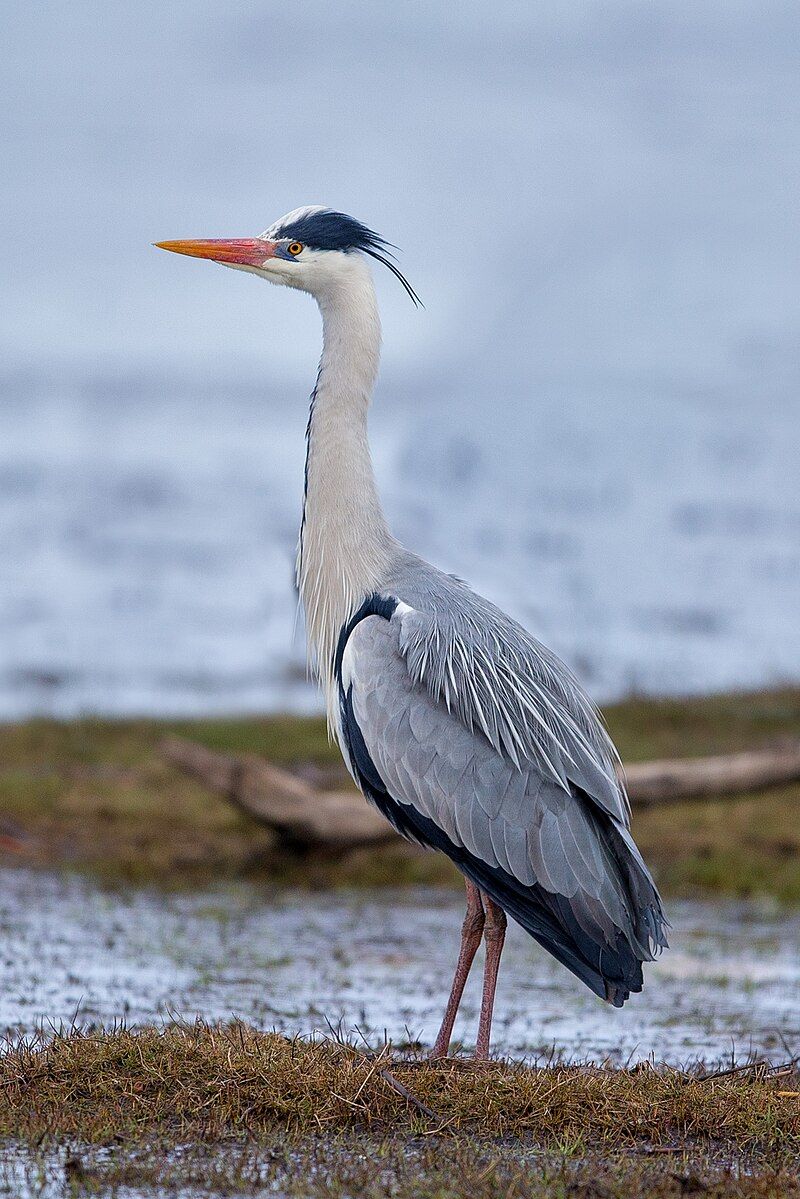
The Grey Heron is a species of wading bird from the family Ardeidae, which is native to temperate regions of Europe, Asia, and parts of Africa. It is typically a permanent resident in its range, meaning it does not migrate to other areas.
However, some populations of herons that reside in more northern parts of its range do migrate southward during the autumn months.
This species of heron is known for its long legs and can be seen wading in shallow water, hunting for small fish, amphibians, and other aquatic life. Its diet consists of a variety of small prey items, as well as insects, reptiles, and other small birds.
The Grey Heron is a solitary bird and can usually be seen standing in one spot, waiting for its prey to come within reach.
| Kingdom | Animalia |
| Phylum | Chordata |
| Class | Aves |
| Order | Pelecaniformes |
| Family | Ardeidae |
| Genus | Ardea |
| Species | A. cinerea |
2. Common Kingfisher
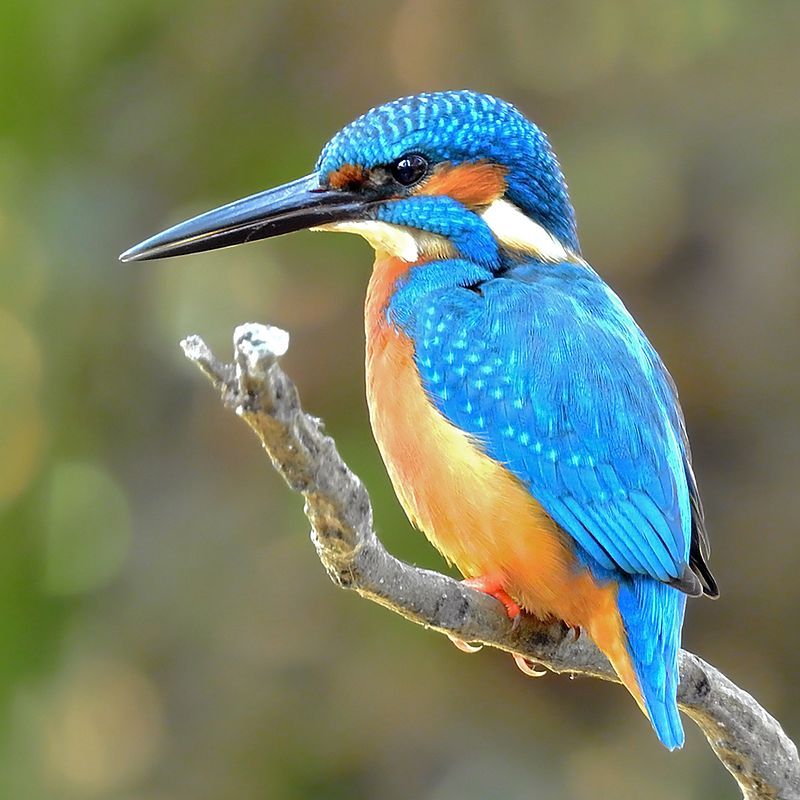
The common kingfisher is a small bird found across Eurasia and North Africa and is known by several other names, including the Eurasian kingfisher and river kingfisher.
There are seven distinct subspecies of this species of kingfisher, each of which has its own unique characteristics. The common kingfisher is mostly resident in its range, meaning that it typically stays in one place for long periods of time.
However, it will migrate to other areas when the rivers in its home range freeze in winter. This allows it to remain in a warmer climate where it can find food and shelter. Migration also allows the bird to find new nesting sites and breeding grounds.
The common kingfisher is a vibrant and colorful bird, and its ability to fly over and around rivers makes it a spectacular sight to behold.
| Kingdom | Animalia |
| Phylum | Chordata |
| Class | Aves |
| Order | Coraciiformes |
| Family | Alcedinidae |
| Genus | Alcedo |
| Species | A. atthis |
3. Grus Monacha
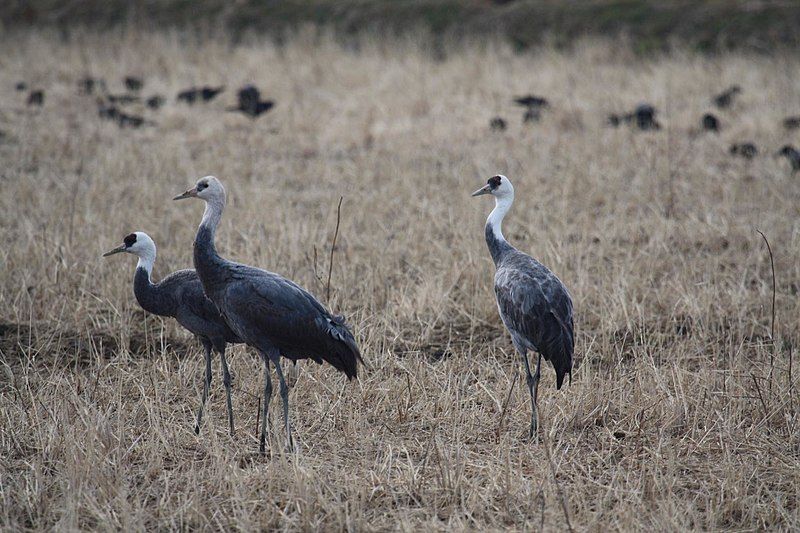
The hooded crane is a species of crane native to East Asia, including Japan, China, Korea, and parts of Russia. It is a medium-sized crane, standing at about 1 meter tall and having a wingspan of 2 meters.
It has a white body with a black hood and a red forehead, and it is known for its loud call that can be heard from far away. The hooded crane is a migratory bird, which means it spends the summer in one area and then moves to another area to spend the winter.
In Japan, the hooded crane is a very common sight as it is one of the most frequent migratory birds. During the winter, hooded cranes can be found in marshlands and wetlands, and during the summer, they can be seen in grasslands and agricultural areas.
The hooded crane is an endangered species, and its population has been declining due to loss of habitat and illegal hunting.
Conservation efforts have been made to help protect the hooded crane and its habitat, and educational efforts have been made to raise awareness of the importance of protecting this species.
| Kingdom | Animalia |
| Phylum | Chordata |
| Class | Aves |
| Order | Gruiformes |
| Family | Gruidae |
| Genus | Grus |
| Species | G. monacha |
4. Slaty-Backed Gull
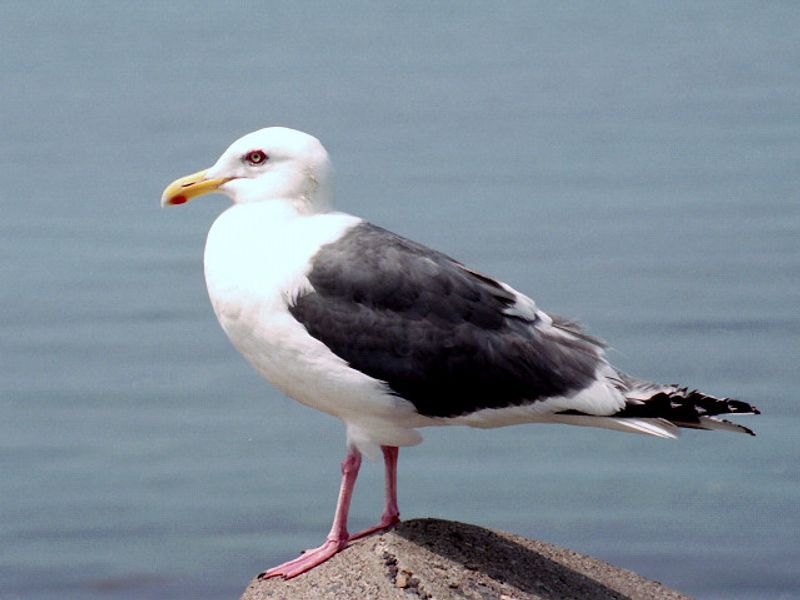
The slaty-backed gull is a large bird with a white head and gray back. It breeds in the northern regions of the Palearctic, which is the area between Europe and Asia. During the non-breeding season, it travels to other regions, making it a migratory bird.
It is similar in appearance to two other species of gulls, the western gull and the glaucous-winged gull. Both of these species also have a white head and gray back, although the slaty-backed gull has a slightly different shape and size.
The slaty-backed gull can be distinguished from the other two species by its larger size and different bill pattern. It is also distinguished by the white patches on its wings which are not present in the other two species.
| Kingdom | Animalia |
| Phylum | Chordata |
| Class | Aves |
| Order | Charadriiformes |
| Family | Laridae |
| Genus | Larus |
| Species | L. schistisagus |
5. Mute Swan
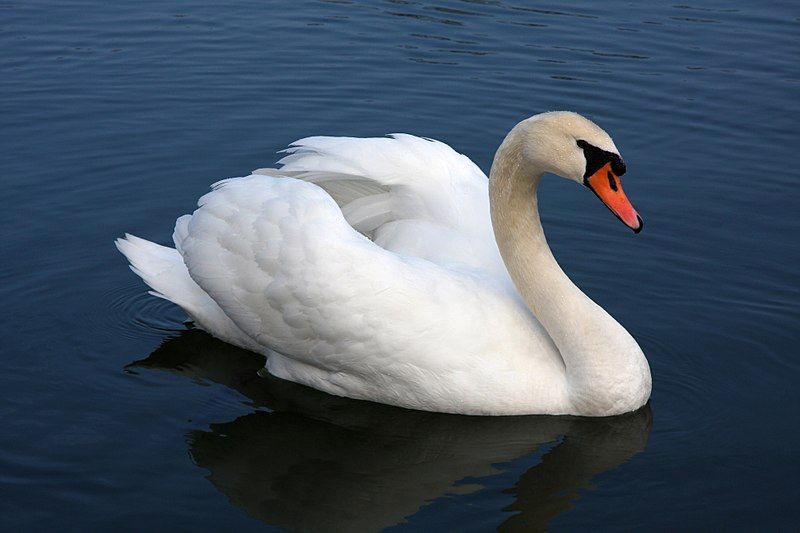
The mute swan is a species of swan belonging to the waterfowl family Anatidae. It is one of the most well-known species of swan and is found in many parts of the world, particularly in the northern hemisphere.
Its native range stretches from Europe and Siberia across to northern Africa, where it can be found inhabiting both fresh and saltwater habitats. The mute swan is a large bird, reaching up to 1.5 metres in length and with a wingspan of up to 2.4 metres.
Its plumage is white, with an orange bill and black legs. The mute swan is an omnivorous species, feeding on a wide variety of food sources including aquatic plants, insects, molluscs, fish and amphibians.
It is also a very social bird, often seen in large flocks and interacting with other waterfowl species.
Its courtship display is particularly impressive, with the male performing an elaborate dance in order to impress the female. The mute swan is a species of conservation concern, particularly in some parts of its native range.
This is largely due to habitat destruction, pollution and illegal hunting, and it is now listed as a species of Least Concern by the International Union for Conservation of Nature (IUCN).
Despite this, the mute swan remains a beautiful and iconic species and can be seen in many wetlands and lakes throughout the northern hemisphere.
| Kingdom | Animalia |
| Phylum | Chordata |
| Class | Aves |
| Order | Anseriformes |
| Family | Anatidae |
| Genus | Cygnus |
| Species | C. olor |
6. White Wagtail
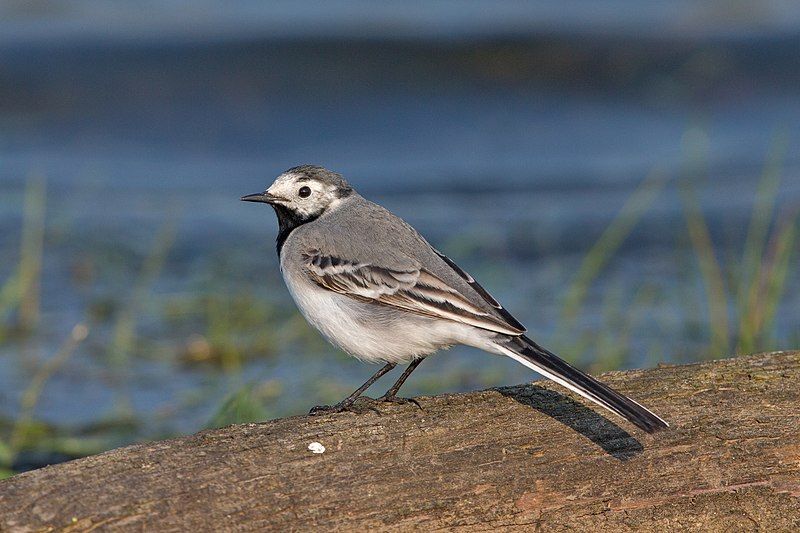
The white wagtail is a small bird belonging to the Motacillidae family, which also includes other species such as pipits and longclaws.
This species of bird can be found across a large geographical area, spanning much of Europe, the Asian Palearctic, and even parts of North Africa. It is also known to breed in Alaska, albeit as a rare occurrence.
White wagtails are known for their distinctive black and white plumage, with a bright yellow underbelly, and long tail. They are a common sight in open grasslands and wetland areas, where they mainly feed on insects and other invertebrates.
They are often seen in flocks, either on the ground or flying in the air. White wagtails are important birds for the ecosystems they inhabit, as they help to keep insect populations in check.
They are also important indicators of environmental health, as their presence is an indicator of a healthy ecosystem. As a result, it is important to ensure that these birds remain safe and protected in their habitats.
| Kingdom | Animalia |
| Phylum | Chordata |
| Class | Aves |
| Order | Passeriformes |
| Family | Motacillidae |
| Genus | Motacilla |
| Species | M. alba |
7. Oriental Cuckoo
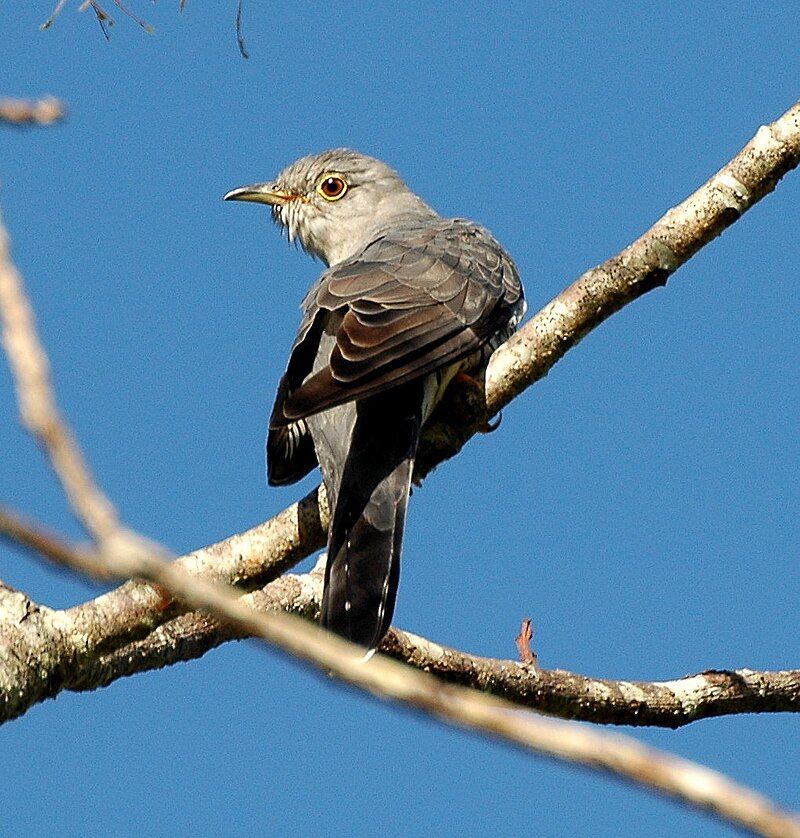
The Oriental cuckoo, or Horsfield’s cuckoo, is a type of bird that belongs to the genus Cuculus and the cuckoo family Cuculidae. It is native to Asia, breeding in the Himalayas and migrating to Southeast Asia in winter.
Before, this species of cuckoo was considered to be a subspecies of the Himalayan cuckoo. It was then given the name Oriental cuckoo, which was used to refer to both species combined. The Oriental cuckoo is a small bird that is typically around 20 cm long.
It has a brown back with white spots, and a white throat and belly. Its beak is dark and curved, and its legs are grey. The cuckoo’s call is a loud, repetitive “coo-coo-coo” sound.
The Oriental cuckoo is an insectivore, and its diet consists mainly of caterpillars, ants, and other insects. It prefers to feed in wooded areas, where it can find plenty of insects to eat. It is also known to eat berries and other fruits.
The breeding season for the Oriental cuckoo runs from April to July. It builds its nest in trees, usually on a fork of a branch. The female usually lays two eggs, which are incubated by both parents.
The chicks are cared for by both parents until they fledge, usually around three weeks after hatching. The Oriental cuckoo is considered to be a species of least concern, meaning that it is not currently threatened with extinction.
It is a very common bird in its range, and its population is thought to be stable.
| Kingdom | Animalia |
| Phylum | Chordata |
| Class | Aves |
| Order | Cuculiformes |
| Family | Cuculidae |
| Genus | Cuculus |
| Species | C. optatus |
8. Ruddy Kingfisher
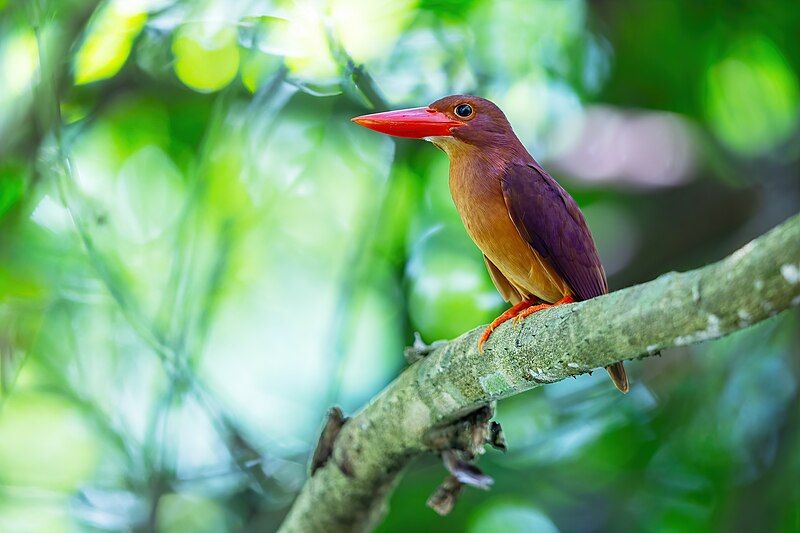
The Ruddy Kingfisher is a beautiful bird native to Eastern and South Eastern Asia. It is a medium-sized tree kingfisher, with a body length of around 20 centimetres.
It is easily recognisable by its bright red plumage, hence its name. This species of kingfisher can be found in a variety of habitats, including open woodlands, wetlands, grasslands and even urban areas.
It feeds on a variety of small prey, including insects, fish, frogs and small reptiles. They are usually seen perched atop branches or hovering over rivers and streams. The Ruddy Kingfisher is widely distributed across Asia, from India in the west to Japan in the east.
It is listed as ‘Least Concern’ on the IUCN Red List, due to its large, stable population and wide distribution.
Despite this, the species is still threatened by habitat loss and fragmentation, as well as by hunting and trapping. The Ruddy Kingfisher is an important species in the region, serving as an important indicator of the health of its environment.
As a result, it is important to conserve and protect the habitats of this species, as well as to enforce laws against hunting and trapping kingfishers.
| Kingdom | Animalia |
| Phylum | Chordata |
| Class | Aves |
| Order | Coraciiformes |
| Family | Alcedinidae |
| Genus | Halcyon |
| Species | H. coromanda |
9. Black-Tailed Gull
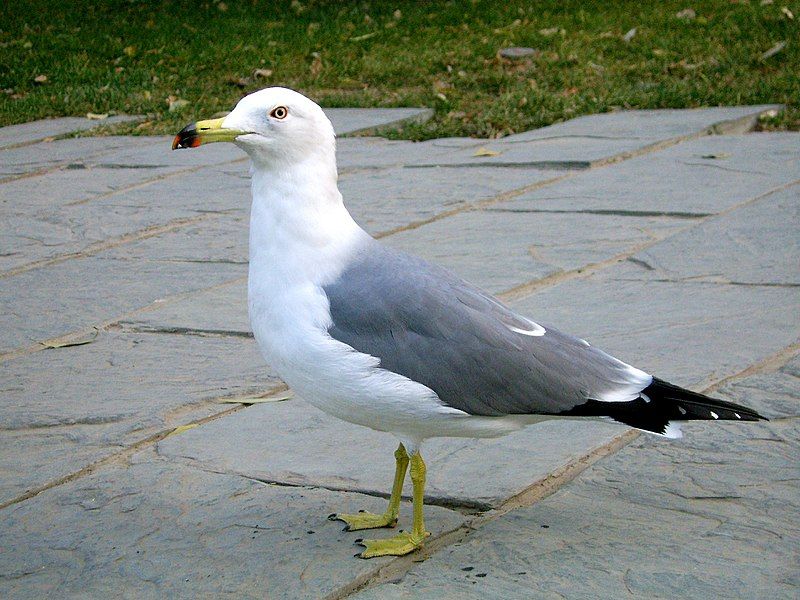
The black-tailed gull is a species of seabird native to East Asia. It is a medium-sized gull, measuring an average of around 20 inches in length. The black-tailed gull is easily identified by its black tail feathers, which contrast with its otherwise white plumage.
The species is found along the shorelines of East Asia, from Russia in the north to Japan and Korea in the east, to Taiwan and Hong Kong in the south. The black-tailed gull is an omnivore, feeding on a variety of small fish, crustaceans, and other aquatic invertebrates.
It is also known to eat human refuse and will scavenge for food in urban areas. The black-tailed gull typically nests in large colonies, often on rocky islands or cliffs close to shore.
The species is vulnerable to human disturbance, and its numbers have been declining in recent years. Conservation efforts are underway to protect the black-tailed gull and its habitat.
| Kingdom | Animalia |
| Phylum | Chordata |
| Class | Aves |
| Order | Charadriiformes |
| Family | Laridae |
| Genus | Larus |
| Species | L. crassirostris |
10. Brown-Eared Bulbul
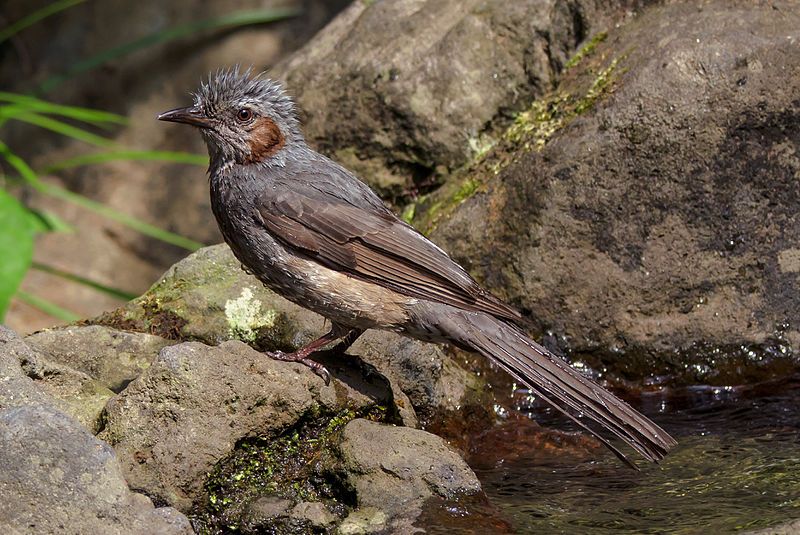
The brown-eared bulbul is a species of passerine bird that is native to eastern Asia. This species is relatively small, measuring up to around 15 cm in length.
It is characterized by its brownish-gray head and upperparts, white underparts, and a distinctive white line running along its throat.
Its most distinguishing feature, however, is its brownish-black ear tufts, which are located at the sides of its head. The brown-eared bulbul is considered to be very common within the northern parts of its range which extends from southern Sakhalin to the northern Philippines.
This species is known to inhabit a variety of habitats, including forest edges, scrublands, grasslands, and cultivated areas. It is an omnivore and feeds on fruits, seeds, and insects.
It is also known to be quite vocal, singing a variety of repetitive songs during the breeding season. The brown-eared bulbul is an important species in its range, playing an essential role in the ecosystem by dispersing seeds and eating insects, helping to maintain the balance in the environment.
As it is so common within its range, it is not considered to be threatened and is not currently listed as vulnerable or endangered.
| Kingdom | Animalia |
| Phylum | Chordata |
| Class | Aves |
| Order | Passeriformes |
| Family | Pycnonotidae |
| Genus | Hypsipetes |
| Species | H. amaurotis |
11. Long-Billed Plover
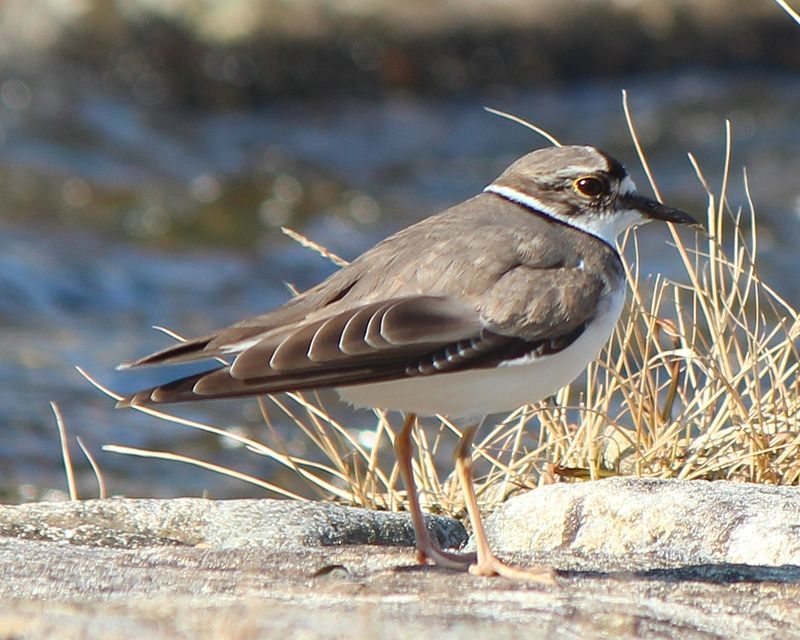
The Long-billed Plover is a species of wading bird found in Asia. It belongs to the family Charadriidae, which includes many types of plovers, lapwings, and sandpipers.
The Long-billed Plover can be found in a variety of countries, including Bangladesh, Bhutan, Brunei, Cambodia, China, Hong Kong, India, Indonesia, Japan, Laos, Malaysia, Mongolia, Myanmar, Nepal, North Korea, Russia, South Korea, Sri Lanka, Taiwan, Thailand, and Vietnam.
These countries span a wide range of climates and habitats, from temperate forests to tropical rainforests. The Long-billed Plover is a medium-sized bird, generally ranging from 9–12 inches in length.
It has a long, thin bill and a black crown that extends just to the front of the eyes. The rest of the body is mostly white or gray, with some darker feathers on the wings and tail. The Long-billed Plover is a ground-nesting species, that prefers to nest in sandy or rocky areas.
It can also be seen foraging in shallow waters, using its long bill to search for small invertebrates and crustaceans.
The Long-billed Plover is an important species in its range; it helps to maintain the balance of the local ecosystems by controlling populations of invertebrates.
| Kingdom | Animalia |
| Phylum | Chordata |
| Class | Aves |
| Order | Charadriiformes |
| Family | Charadriidae |
| Genus | Charadrius |
| Species | C. placidus |
12. Whistling Green Pigeon
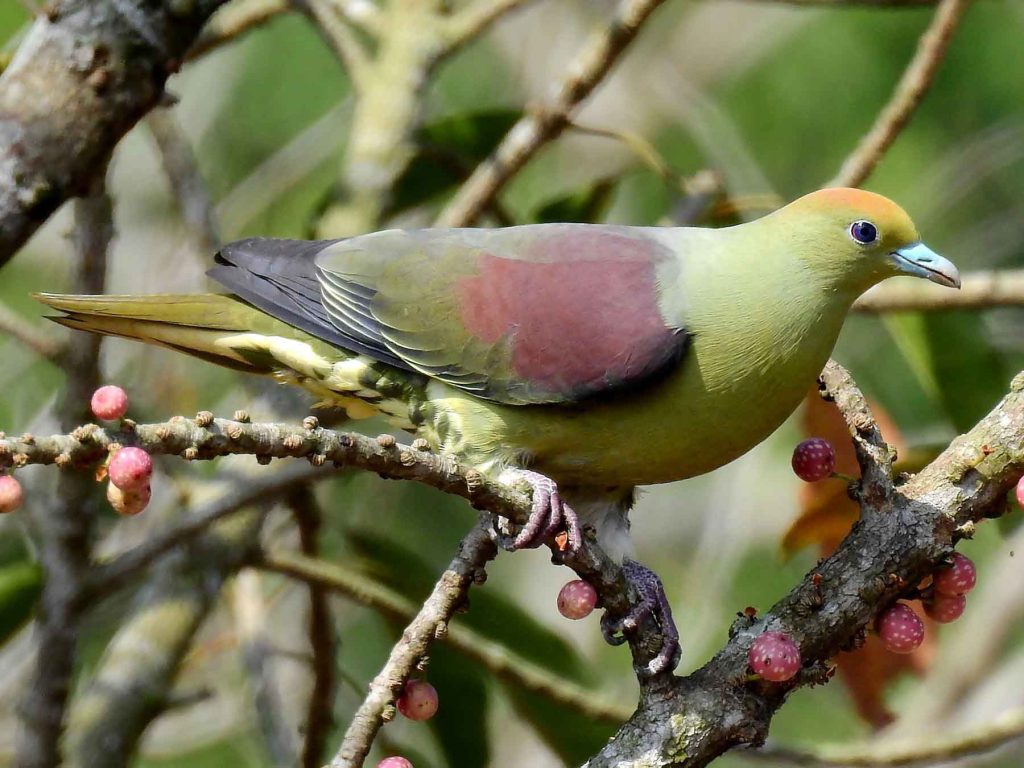
Source: ebird.org
The Taiwan green pigeon is a species of bird in the Columbidae family, which also includes many varieties of doves and pigeons. It was first documented by Robert Swinhoe in 1863 and is mainly found in Taiwan and the remote Batanes Islands, located in the Philippines.
The Taiwan green pigeon has adapted to inhabit subtropical and tropical moist lowland forests, as well as rural gardens. Unfortunately, this species is now threatened with habitat loss due to human activities, such as deforestation.
This means that the Taiwan green pigeon population is decreasing, and there is a need for conservation efforts to protect this species from further decline.
| Kingdom | Animalia |
| Phylum | Chordata |
| Class | Aves |
| Order | Columbiformes |
| Family | Columbidae |
| Genus | Treron |
| Species | T. formosae |
13. Black Kite
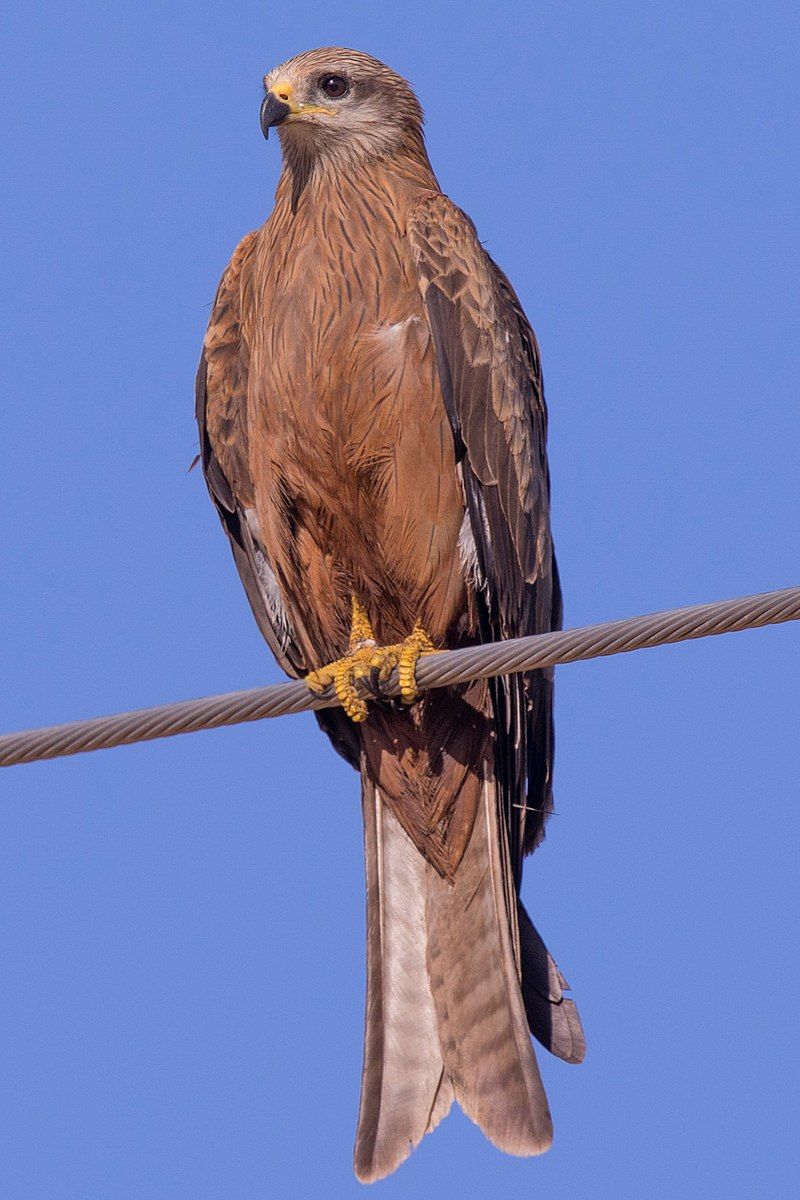
The black kite is a bird of prey belonging to the Accipitridae family, which also includes several other diurnal raptors.
This species of bird is believed to be the most abundant of its kind in the world, although certain populations have seen a decrease in their numbers due to various factors.
This decrease has been drastic in some areas, while in other locations the population has seen fluctuations.
The black kite has a medium-sized body in comparison to other members of the Accipitridae family and typically feeds on smaller animals such as rodents, lizards, and insects.
They are often found near bodies of water where they can easily spot their prey, and they have adapted well to a variety of habitats.
In order to protect their population, conservation efforts are being made to ensure that their numbers remain stable and that their habitats are not compromised.
| Kingdom | Animalia |
| Phylum | Chordata |
| Class | Aves |
| Order | Accipitriformes |
| Family | Accipitridae |
| Genus | Milvus |
| Species | M. migrans |
14. White-Throated Needletail
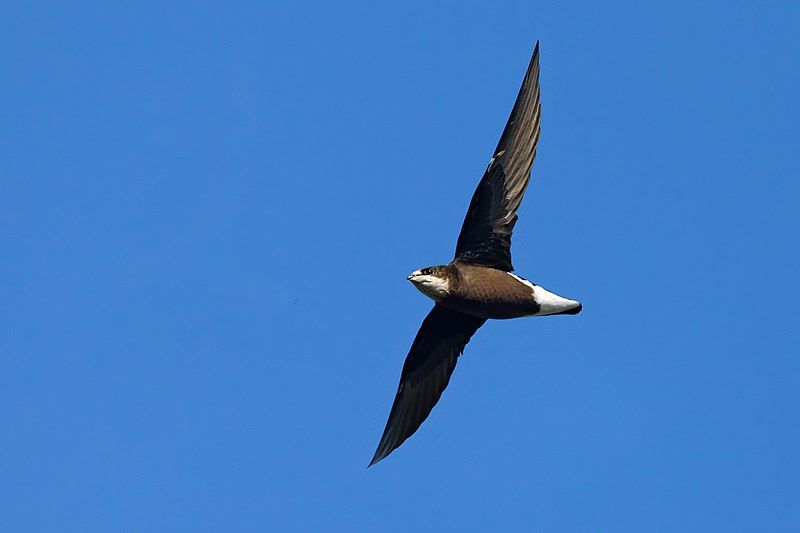
The white-throated needletail is a large swift in the genus Hirundapus. It is one of the fastest birds in the world, with reported speeds of up to 170 km/h in horizontal flight.
Unfortunately, the methods used to measure its speed have not been published, so its exact speed is unknown. The white-throated needletail is also known by two other names: needle-tailed swift and spine-tailed swift.
These names are derived from its unique shape, which features a long, narrow tail with a spiny tip.
Its body is predominantly greyish-brown, with a white throat and pale underparts. The white-throated needletail migrates in large flocks, often in the company of other species of swifts. It has a wide range, covering much of Asia, Europe, and the Middle East.
Its diet consists mainly of flying insects, which it catches in mid-air, flapping its wings rapidly to keep up with its prey. The white-throated needletail is an impressive species of bird, known for its incredible speed and unique appearance.
Although its exact top speed is unknown, it is still considered one of the fastest birds in the world.
| Kingdom | Animalia |
| Phylum | Chordata |
| Class | Aves |
| Clade | Strisores |
| Order | Apodiformes |
| Family | Apodidae |
| Genus | Hirundapus |
| Species | H. caudacutus |
15. Indian Spot-Billed Duck
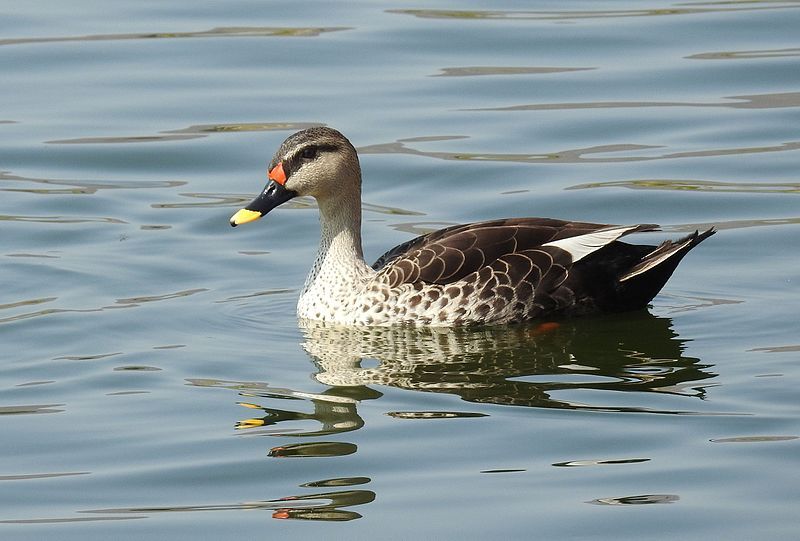
The Indian spot-billed duck is a species of large dabbling duck that can be found in the freshwater wetlands of the Indian subcontinent. It is a non-migratory species, meaning that it breeds in the same area throughout the year.
The duck is named after the distinctive red spot that can be found at the base of its bill, which is only found in the mainland Indian population.
This spot is believed to be of great importance to the Indian spot-billed duck as it helps the birds to recognize one another in their breeding grounds.
The spot-billed duck is also an important species for local fishermen, as they often use the birds to identify areas with plentiful fish.
Furthermore, the Indian spot-billed duck is a vital part of the local ecosystem, as it is a keystone species that helps to control the population of aquatic insects and other invertebrates that are found in the wetlands.
| Kingdom | Animalia |
| Phylum | Chordata |
| Class | Aves |
| Order | Anseriformes |
| Family | Anatidae |
| Genus | Anas |
| Species | A. poecilorhyncha |
16. Kentish Plover
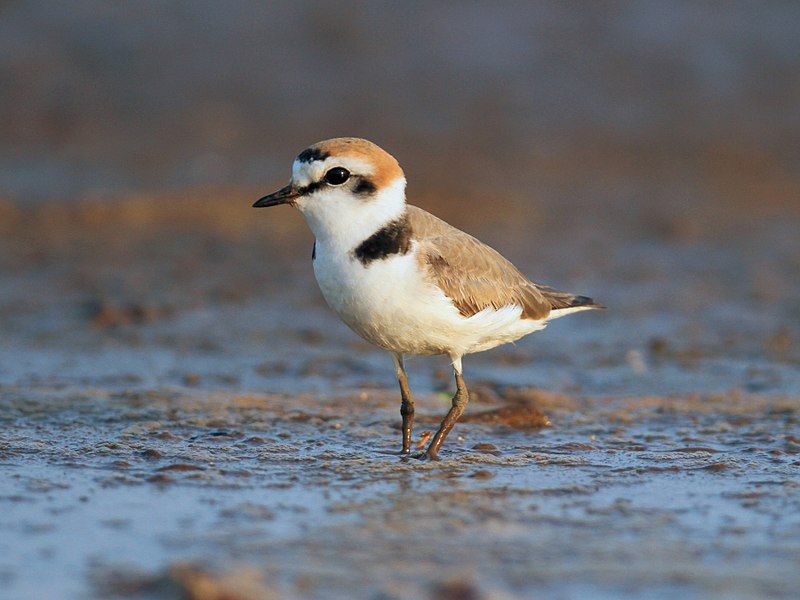
The Kentish plover is a small migratory bird found all over the world. It belongs to the family Charadriidae, which consists of plovers, lapwings, and dotterels. This family of birds is known for its coastal and inland habitats.
The Kentish plover is found on the beaches of saline lakes, lagoons, and coasts, preferring sand dunes, marshes, semi-arid deserts, and tundra regions.
It is a highly adaptable species, capable of thriving in a wide variety of habitats. The Kentish plover breeds during the summer months, usually from April to August.
It lays its eggs in the sand or gravel of its preferred habitats and uses its camouflage coloring to blend in with the surroundings. The female plover will usually lay three to four eggs. The chicks are very precocial, meaning they are able to leave the nest soon after hatching.
Both parents are involved in the care of the young. The Kentish plover is a small shorebird, measuring around 6 inches in length. It has a stocky body and a short neck with a black-and-white striped head. Its wings and back are gray in color, and its belly is white.
It has a unique feature in that its legs are short and thick, enabling it to run quickly along the shoreline. The Kentish plover is a unique species of bird that has adapted to many different habitats.
It is a small shorebird, yet it is capable of thriving in a variety of environments. It is a resilient bird that is able to survive in its preferred habitats, thanks to its camouflage coloration and its ability to run quickly along the shoreline.
| Kingdom | Animalia |
| Phylum | Chordata |
| Class | Aves |
| Order | Charadriiformes |
| Family | Charadriidae |
| Genus | Charadrius |
| Species | C. alexandrinus |
17. Little Ringed Plover
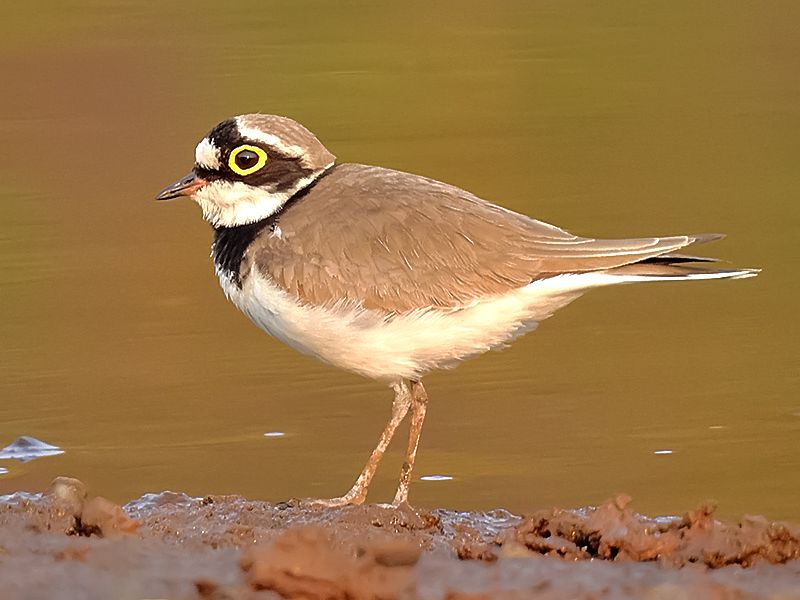
The little ringed plover is a species of small wading bird that belongs to the Charadrius genus. The name of the genus is derived from a Late Latin word which was mentioned in the fourth-century Vulgate.
This word is thought to have come from the Ancient Greek kharadrios, a bird that was found in river valleys. The little ringed plover is usually found near these types of environments, such as wetlands and coastal areas.
It prefers to feed on small invertebrates such as insects and worms. It is a small bird, with a length of around 17-18 centimeters and a wingspan of 29-32 centimeters. The plumage of the little ringed plover is mainly white with dark brown patches on the back, wings, and head.
It also has a black band around its neck and a bright yellow ring around its eye. The little ringed plover is a widely distributed bird, found in many parts of Europe, Asia, and Africa.
| Kingdom | Animalia |
| Phylum | Chordata |
| Class | Aves |
| Order | Charadriiformes |
| Family | Charadriidae |
| Genus | Charadrius |
| Species | C. dubius |
18. Little Egret
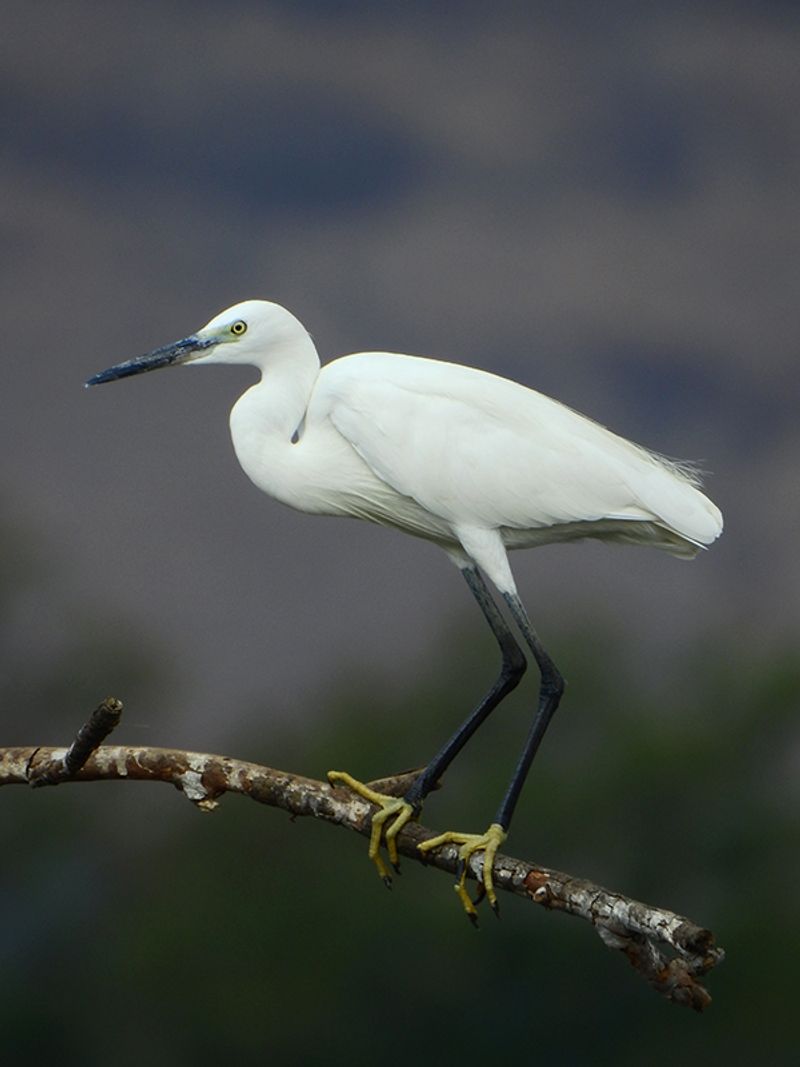
The little egret is a species of small heron that belongs to the family Ardeidae. It is a white bird with a slender black beak, long black legs, and in the western race, yellow feet.
It is an aquatic bird that feeds in shallow water and on land, consuming a variety of small creatures including amphibians, fish, insects, worms, and crustaceans. It has a wide range of habitats, including marshes, ponds, streams, and coasts.
Its diet consists mostly of fish, but it also eats other small animals such as frogs, lizards, and small mammals. The egret is an important part of the ecosystem, helping to control insect populations and providing food for larger predators.
It is also a beautiful bird to observe, with its bright white plumage and slender black beak.
| Kingdom | Animalia |
| Phylum | Chordata |
| Class | Aves |
| Order | Pelecaniformes |
| Family | Ardeidae |
| Genus | Egretta |
| Species | E. garzetta |
19. Great Spotted Woodpecker
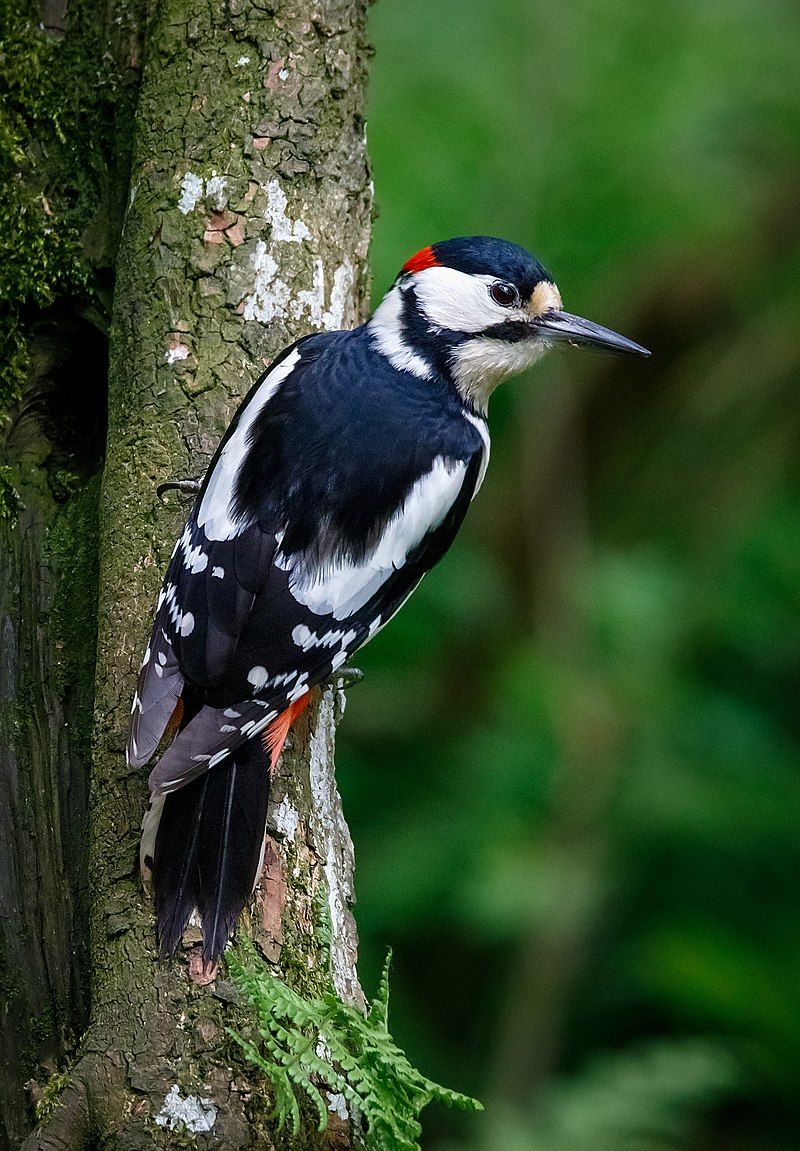
The great spotted woodpecker is an impressive bird with black and white plumage and a distinctive red patch on its lower belly. Males and young birds also have red markings on their necks or head, making them easily identifiable.
This species can be found across the Palearctic region, which includes parts of North Africa. It is a medium-sized woodpecker, measuring between 16 and 19 cm in length and weighing up to 50 g.
Its diet consists of a variety of insects, larvae, nuts, and seeds, making it an important part of the ecosystem. The great spotted woodpecker is an important species for woodland conservation, as it helps with controlling insect and pest populations.
| Kingdom | Animalia |
| Phylum | Chordata |
| Class | Aves |
| Order | Piciformes |
| Family | Picidae |
| Genus | Dendrocopos |
| Species | D. major |
20. White-Backed Woodpecker
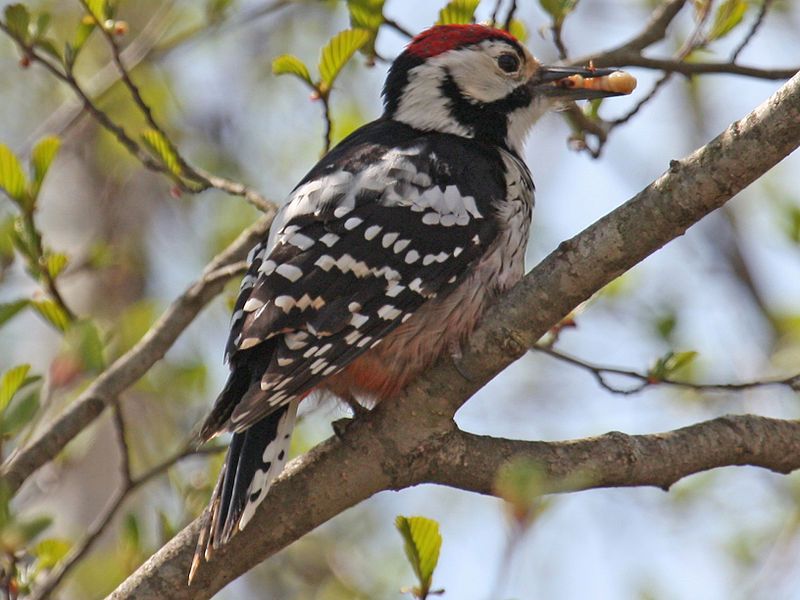
The white-backed woodpecker is a type of bird found in the Eurasian region. It is a member of the genus Dendrocopos, which is a part of the Picidae family, which includes all woodpeckers.
This woodpecker is mostly found in deciduous forests, where it can be seen pecking at deadwood. It has a white back, and its chest and flanks are gray. Its head is black, and it has a red crown and a white throat.
It also has a black moustache stripe that runs through its eyes. The underside of its wings is white, and its tail is black. This species is known to excavate cavities in trees to make nests. It also forages on the ground, searching for insects and other food.
It is an important species for controlling pests, as it feeds mainly on insect larvae.
| Kingdom | Animalia |
| Phylum | Chordata |
| Class | Aves |
| Order | Piciformes |
| Family | Picidae |
| Genus | Dendrocopos |
| Species | D. leucotos |
21. Long-Eared Owl
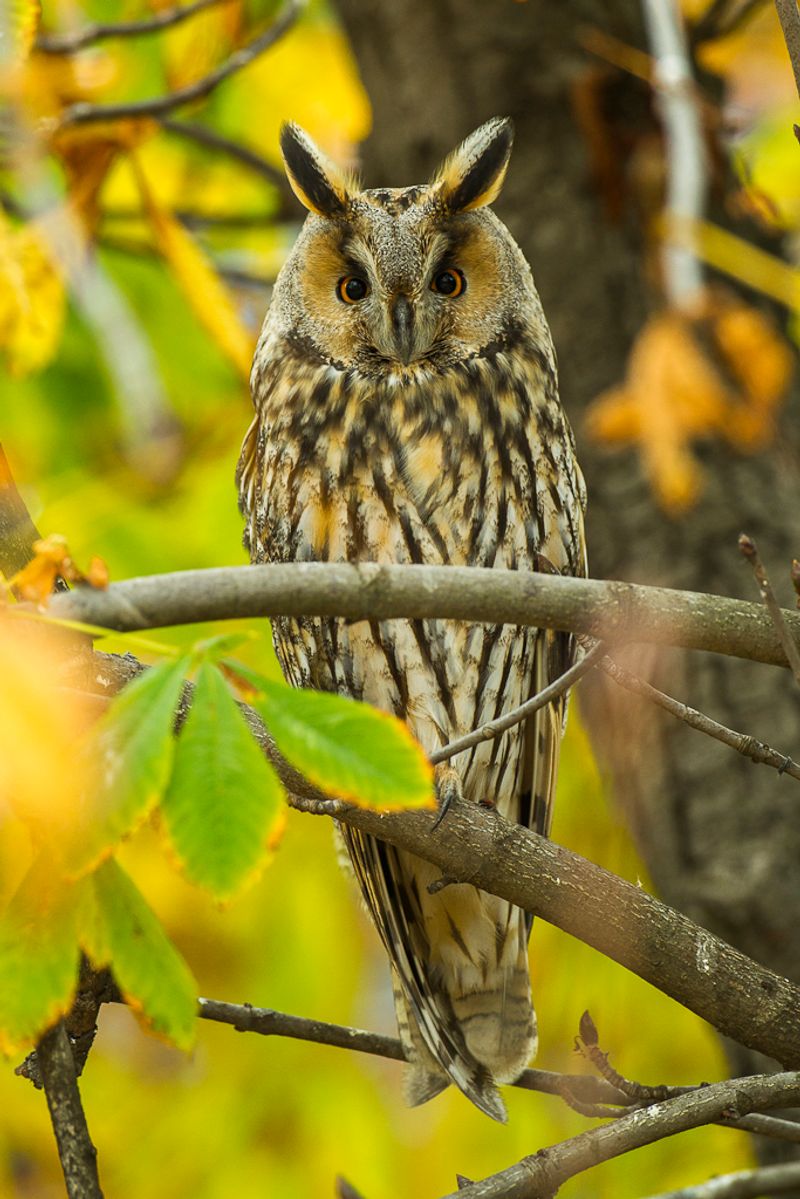
The long-eared owl is a medium-sized species of owl with a wide range of habitats. It is also known as the northern long-eared owl, lesser horned owl, or cat owl.
Its scientific name is derived from Latin, with the genus name Asio referring to a type of eared owl, and otus to a small, eared owl. This owl is generally found in boreal and old-growth forest habitats, but can also be found in agricultural fields or other disturbed habitats.
It typically prefers open woodlands and is a solitary species, usually found roosting in trees.
It has a distinct call and is more active at night, hunting for small mammals, insects, and frogs. The long-eared owl is a medium-sized owl, with a length ranging from 33 to 43 cm and wingspan of up to 105 cm.
The male has a distinct yellowish-brown facial disc, with a white throat, dark eyes, and long, pointed ear tufts. The female is similar in appearance but is browner in color.
Juvenile owls are similar in appearance to adults. The long-eared owl has an extensive breeding range, spanning much of North America, Europe, and Asia. It is a migratory species, with many populations migrating south during the winter.
During the breeding season, they are usually found in the same areas. The long-eared owl is classified as a species of least concern by the International Union for Conservation of Nature (IUCN), due to its wide range and stable population.
It is protected under the Migratory Bird Treaty Act in the United States and is a species of special concern in some states.
| Kingdom | Animalia |
| Phylum | Chordata |
| Class | Aves |
| Order | Strigiformes |
| Family | Strigidae |
| Genus | Asio |
| Species | A. otus |
Conclusion
Birds in Okayama are an important part of the local ecosystem and provide an amazing array of colors and sounds for residents and visitors to enjoy.
There are many different species that can be observed in many areas throughout the prefecture, from the coastal areas to the mountains.
With continued protection and conservation, the birds of Okayama will continue to provide a vibrant and beautiful part of the environment for generations to come.